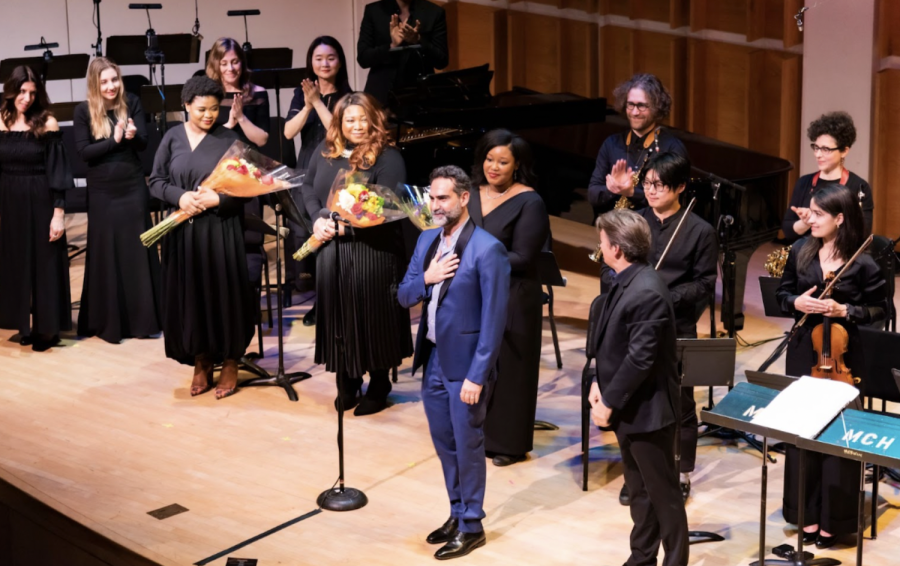‘Furiosus’: NYU Casa Italiana opera tells a story of love, despair and madness
NYU’s Casa Italiana and its in-house composer, Roberto Scarcella Perino, present the daring opera “Furiosus.”
April 5, 2023
Within the halls of the Kaufman Music Center, professors Flora Gagliardi and Roberto Scarcella Perino came together to present the North American premiere of a historic opera, “Furiosus.” The opera was originally commissioned by Opera Philadelphia. It premiered in Italy at Città della Pieve in 2017 and later showed in Florence at NYU’s Villa La Pietra in 2019.
Gagliardi and Scarcella Perino adapted scenes from the Italian poet Ludovico Ariosto’s “Orlando Furioso” to create an opera, capturing his romantic writing and sentimental style, which had a significant influence on British writers like William Shakespeare and Lord Byron. The two captured these flourishes by focusing on the psychological effects of an all-consuming love that is ultimately doomed through the lens of star-crossed lovers.
While Scarcella Perino composed the music, Gagliardi intensely studied “Orlando Furioso” and wrote the libretto — the script of the opera. She spoke of her difficulty with this lofty task, noting a fateful dream as the inspiration for her writing.
“One morning, after a deep sleep, I woke up with a precise perception of what the structure of the Furiosus should be,” Gagliardi said. “For me, [the opera] comes from dreams.”
The libretto is graceful and grand, referencing the source material without simply rehashing its plot points. Scarcella Perino’s score provides a whimsical yet dramatic musical backdrop to the drama. This music, alongside the characters, is both complex and captivating, blending traditional operatic styles with contemporary principles to create a truly unique and well-integrated sound.
Set in the seventh century, during the war between Charlemagne’s Christian knights and the Saracens, the plot revolves around the knight Orlando and his unrequited love for the beautiful pagan princess Angelica, which eventually drives him mad. This same theme later inspired “Romeo and Juliet.”
Ariosto’s writing embodies quintessential romance literature of the Renaissance period, featuring themes of chivalry and adventure while set in far-off and mystical lands.
“It may seem an impossible feat to transform the most important epic poem of Italian literature into an opera,” said Stefano Albertini, the director of Casa Italiana Zerilli-Marimò. “No one had ever dared to tackle the work in its entirety.”
The Italian name of the source poem, “Furiosus,” translates to “furious,” referencing its poetic characters who are driven by pure passion. As Orlando falls into lunacy, the theatrical expressions from the male singers capture the raw intensity of its central character’s emotional turmoil.
What sets “Furiosus” apart from other operas is its focus on passion rather than plot. Despite its traditional storyline of an unrequited love story, the ferocity from the characters’ emotions is what drives the performance from ordinary to exemplary.
The opera’s exploration of human passion is complex, deviating from its narrative structure and falling through anger, hate, love, joy and sorrow, all to create an affecting experience. The performers embody this wide range of emotions, offering a true cathartic experience for the audience.
“Furiosus” updates one of the most important works of Italian literature into a well-written, expressive and unforgettable show. The opera explores the power of love and how it pushes us to do almost anything, to the point of driving us mad.
Correction, April 5: A previous version of this article stated that the North American premiere of “Furiosus” was hosted at NYU’s Italiana Zerilli-Marimò. The article has been updated to reflect this correction. WSN regrets the error.
Contact Samantha Burge at [email protected].
























































































































































